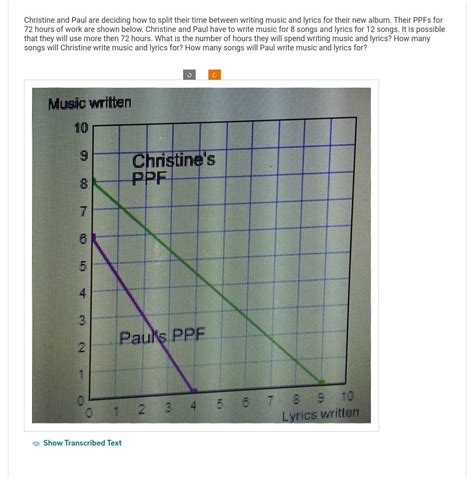Christine & Paul: Masters of Time Management – How They Conquer Their Day
Christine and Paul are a dynamic duo, juggling demanding careers, a vibrant social life, and personal pursuits with remarkable ease. Their secret? A finely-tuned system of time management that allows them to not only accomplish their goals but also maintain a healthy work-life balance. This isn't about rigid schedules and relentless productivity; it's about strategic planning and mindful execution. Let's delve into the techniques that make their time management so effective.
What's Their Secret to Effective Time Management?
Their success isn't about superhuman abilities; it's about a proactive and adaptable approach. They utilize a combination of strategies, tailoring them to their individual needs and the ever-changing demands of their lives. This flexibility is key – a rigid system simply won't work in the face of unexpected events.
1. Prioritization and Goal Setting:
Before tackling any task, Christine and Paul clearly define their priorities. They start each week by identifying their most important goals, both professional and personal. This isn't just about making a to-do list; it's about strategically ordering tasks based on their impact and urgency. They use the Eisenhower Matrix (urgent/important) to categorize tasks, ensuring that crucial activities aren't overshadowed by less significant ones.
2. Time Blocking and Scheduling:
Once priorities are set, they utilize time blocking – allocating specific time slots for particular tasks in their day. This isn't about filling every minute, but about creating focused periods of work. They schedule in breaks and buffer time to account for unforeseen delays, preventing stress and maintaining productivity. Their calendars are not just digital reminders; they are blueprints for their day.
3. Utilizing Technology Wisely:
Christine and Paul leverage technology to streamline their workflows. They use productivity apps to manage tasks, set reminders, and track their progress. However, they are mindful of the potential distractions technology can introduce. They consciously disconnect from social media and email during focused work periods, creating uninterrupted blocks of time for deep work.
4. Delegation and Outsourcing:
Where possible, they delegate tasks. Recognizing their limitations, they outsource non-essential activities to free up their time for more important responsibilities. This isn't about laziness; it's about efficient use of resources. They understand that focusing on their strengths allows them to maximize their output.
5. Regular Review and Adjustment:
Christine and Paul regularly review their systems. They analyze their progress, identify areas for improvement, and adjust their strategies accordingly. This iterative process allows them to refine their approach over time, making their system more efficient and effective. Flexibility is crucial; what works one week might not work the next.
How Do They Maintain a Healthy Work-Life Balance?
Their time management isn't just about productivity; it's about achieving a harmonious blend of work and personal life.
How Do They Avoid Burnout?
Burnout is a real threat for high-achievers. To avoid this, they prioritize self-care, scheduling regular exercise, relaxation time, and social activities into their week. They view these activities not as luxuries but as essential components of their well-being and overall effectiveness.
What Techniques Do They Use to Reduce Stress?
They proactively manage stress through mindfulness practices like meditation and yoga. They understand that a clear mind leads to better focus and productivity. They also emphasize the importance of sufficient sleep, recognizing its crucial role in both physical and mental health.
Addressing Frequently Asked Questions
How do Christine and Paul handle unexpected interruptions?
Unexpected events are inevitable. They've built flexibility into their schedules, incorporating buffer time to absorb minor disruptions. For larger interruptions, they reassess their priorities and adjust their plans accordingly, remaining adaptable and avoiding rigid adherence to their initial schedule.
What are their biggest time-wasting culprits and how do they combat them?
They identify social media and email as significant time sinks. They combat this by scheduling specific times to check these platforms, minimizing constant distractions. They also utilize features like "Do Not Disturb" modes to create uninterrupted focus periods.
Do they use any specific apps or tools for time management?
While they utilize various productivity apps, they don't rely on any single tool. Their approach is holistic, incorporating a blend of digital and analog methods. Their focus is on finding a system that works best for them, not on using the latest trendy app.
Christine and Paul's success isn't about following a rigid formula; it's about developing a personalized system that aligns with their individual needs and goals. By prioritizing, planning, and remaining adaptable, they demonstrate that effective time management isn't about working harder, but about working smarter. Their approach serves as a valuable lesson for anyone seeking to improve their time management skills and achieve a more balanced and fulfilling life.

